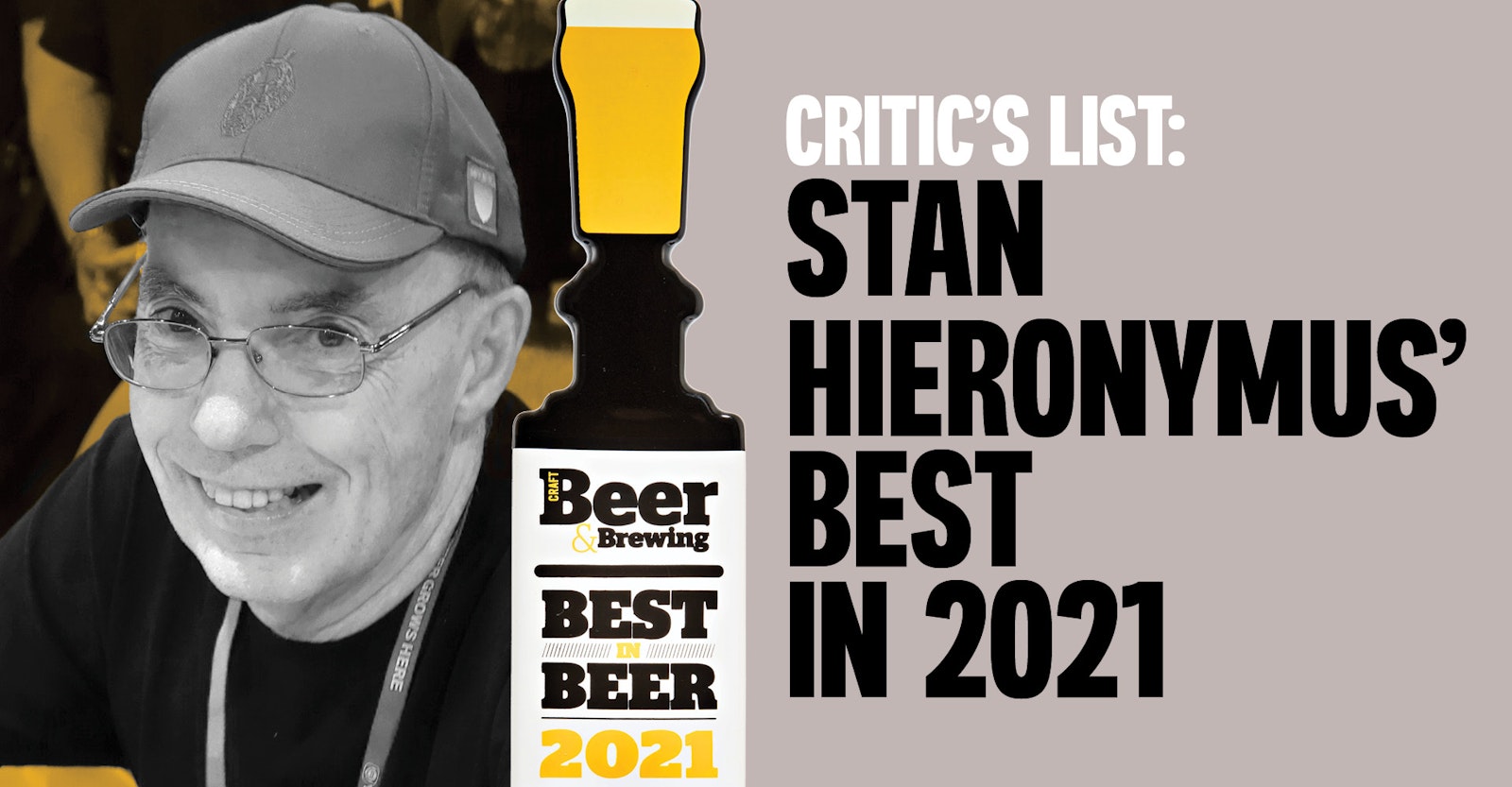Top 10 Beers of the Year
Burley Oak Raspberry Cupcake J.R.E.A.M. (Berlin, Maryland) We’ll get this out of the way up front. I’m not sure that I recognize myself anymore. A kettle sour made with cake batter and lactose? I had this in a flight at the brewery, chosen as an act of faith. Then I bought a four-pack to go. Butt-ugly beer, with a magical raspberry finish.
Bierstadt Lagerhaus Helles (Denver) Nothing says stupid like moving to the Denver area, as we did, and not putting a Bierstadt beer on your list. Wait for something poured slowly if you want, but I’ll be on my second serving of this beer that comes with “just the right hit of matchstick.” (Full credit to Greg Engert for that phrase.)
Bell’s Two Hearted Ale (Comstock, Michigan) Sure, you can get Two Hearted Ale anywhere now (for instance, when it’s the lone non-industrial beer in a gas station somewhere along the backroads of northern Tennessee). But moving from the Eastern to the Mountain Time Zone and stopping in the Midwest along the way, it’s like bumping into an old friend and wondering why you don’t hang out more often. Bitter in 1995. Bitter today.
Chuckanut Grodziskie (Bellingham, Washington) This is not simply a placeholder for Live Oak Grodziskie—the beer I might have promised to put on this list every year, but I didn’t drink in 2021 (see below). As lead brewer Rick Burns says, “This looks and tastes like a Chuckanut beer.” Precisely what I want in a grodziskie: smoke and hops, in balance. It’s a high-wire act.
Cloudburst “Bill” (Seattle) The can says it’s a pale ale but offers little other information. It was given to me by a hop grower who happened to know that it was hopped with USDA 200010-008, a thoroughly modern public hop on the way to getting a name next year. There’s a bit of peach, a touch of pineapple … but while drinking it next to a hop yard in Oregon’s Willamette Valley and watching the sun set on a field of Simcoe hops, I had to wonder what it would taste like if I dropped in just a few fresh cones.
Fair Isle Alicel (Seattle) Fair Isle cofounder Geoffrey Barker compares the microorganisms that constitute the brewery’s mixed culture to the members of an orchestra. Playing along with them, Hallertau Mittelfrüh is not so much a star soloist but the newest member who hails from a rolling hillside in Germany and fits in perfectly. Bright flavors are a little brighter, the mellow finish a little mellower. Beer descriptors? Lemon zest, fresh-cut hay on a steamy August night in Illinois, subtle minerality, and fresh acidity.
Firestone Walker Welcome to LA (Paso Robles, California) Hoppy lager. That’s really the only drinking note you need. Sure, it showcases the fruity, dank aromas and flavors you expect from American hops, seamlessly integrated with rounded malt. Add more adjectives if you want. Fight on Twitter about what to call it. Or keep it as simple as this beer isn’t: hoppy lager.
Jackie O’s Livelihood (Athens, Ohio) At 2.9 percent ABV, this was the littlest beer at Good Word’s Little Beer festival in Duluth, Georgia, outside of Atlanta. A come-back-and-have-another palate cleanser amidst a silly number of lagers, with just enough wheaty heft to balance lemony tartness.
Outer Range Neige (Frisco, Colorado) On a rainy Saturday afternoon, I wrote on Instagram, “This is the best dubbel I’ve ever had at a mile-plus—in this case, 8,895 feet.” Dark fruit? Check. Spicy? Check. Digestible? Check. I’ve since remembered a bottle of New Belgium Abbey Grand Cru in a lookout tower in 1993—at 10,000 feet—but that’s pretty good company.
Russian River Intinction Sauvignon Blanc Dry-Hopped with Nelson Sauvin (Windsor, California) Intinction was one of this magazine’s best 19 beers of 2019. This version turns up the intensity in every way yet somehow retains the same measure of nuance—more sauvignon blanc, more underlying fruitiness, that punch in the nose from Nelson Sauvin hops. Not recommended for chardonnay drinkers.
Today’s Drinkers Should Pay Attention to…
Where they are drinking, and what the looks on the faces of brewery and taproom employees (even if they are behind masks) reveal about the place.
Today’s Brewers Should Pay Attention to…
Sustainability, and not only within the brewery itself or its distribution footprint. Raw materials come with different environmental costs.
A Beer-Related Thing I Can’t Wait to Experience Again Post-COVID
Live Oak Grodziskie, followed by Live Oak lagers, followed by blends of Grodziskie with Live Oak lagers that sometimes end up on the bar top at the brewery.
One Beer That Deserves More Attention Than It Gets
This is a rhetorical question, right? See above. My second choice would be the beer that turns over quickest at your local brewery taproom and has an average Untappd rating of 3.42.
What Hop Do You Wish Was in More Beers?
Brewer’s Gold. Released in 1934, this was a hop ahead of its time, with the potential to produce the exotic flavors now in style. She’s somewhere on the family tree of many of the world’s most popular varieties. Citra is a great-great-granddaughter. What might happen if growers and brewers gave Brewer’s Gold the same kind of love they do the newest numbered experimental varieties? There are reasons that hops get left behind, as she did, but I’m certain the beers would be more interesting than ones made with feral hops found behind a barn on a heritage farm.

